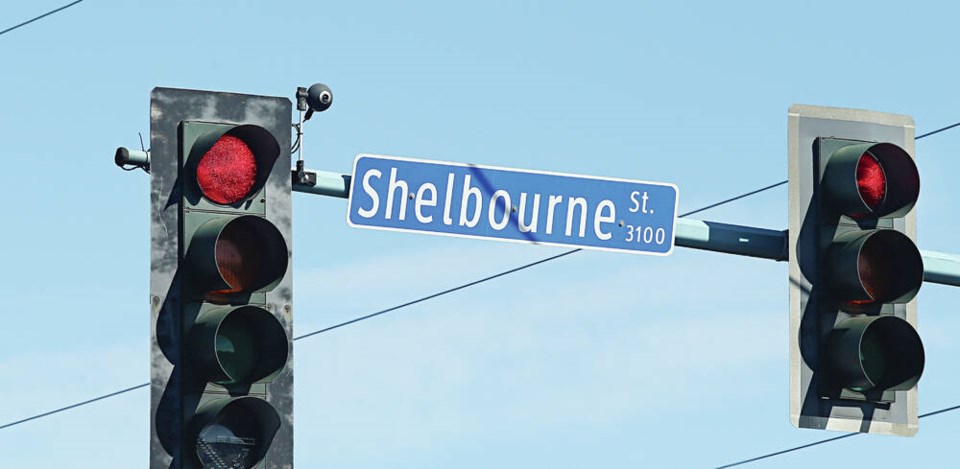Two Victoria city councillors are hoping to push the province to install more than 50 speed and red-light cameras at high-risk intersections in the city.
Councillors Dave Thompson and Matt Dell have put forward a motion, to be considered at Thursday’s committee of the whole meeting, to have the city ask the province to install the cameras at all locations in Victoria where there were more than 20 casualty crashes between 2018 and 2022. A casualty crash is one that results in injury or a fatality.
In an interview Tuesday, Thompson said the issue is topical, given that within the last week alone, a 76-year-old woman was struck and killed by a vehicle at the intersection of Interurban Road and Grange Road in Saanich, and a B.C. Transit bus was hit by an SUV at the corner of Bay and Douglas streets.
The motion council will consider this week cites ICBC data showing that between 2018 and 2022 there were 4,087 casualty crashes in Victoria.
“The numbers show that there’s just so much of it going on,” Thompson said, adding he was surprised to learn there is only one red-light camera in Victoria, at the intersection of Shelbourne Street and Hillside Avenue.
There is a red-light camera in Saanich at the intersection of Tillicum Road and the Trans-Canada Highway.
Thompson said given the population growth in the region and increasing number of people on the roads, something needs to be done.
“It just feels to me, as somebody who’s been driving here for 10 years, that things are becoming more impatient and people are being a little bit more aggressive once in a while and we’ve also got the cellphone distracting people,” he said.
“I’d like to see cameras posted around the city frequently enough that people will be putting down their phones and really paying attention. Because all it takes is a little slip of attention, and then you’ve got a very serious consequence for yourself or someone else.”
Thompson and Dell suggested cameras be placed at intersections where more than 20 casualty crashes have occurred over the last five years, though Thompson said he’s not tied to a number and hopes council will be able to determine what number to ask for.
According to ICBC numbers, there are 54 intersections in the city that have been the site of 20 or more injury-causing crashes over the last five years.
Thompson did not know the cost of installing the cameras. Neither ICBC nor the province on Tuesday could provide that information.
Thompson said he’s less worried about the cost than the danger.
“To me the costs of not doing it are higher than the cost of doing it,” he said. “When we’re looking at casualty crashes, there would be cost recovery in the fine revenues, but this isn’t a revenue-generating idea, it’s about safety.”
Thompson said the hope is that council will get behind the initiative and request that the province act, or at least allow the city to install cameras itself.
“I’d like them to come back to us and other municipalities with a plan to phase this in fairly quickly and get us up to a point where it’s actually affecting behaviour,” he said. “We’ve adopted Vision Zero, the idea that we should have zero casualty crashes, and we’re not trending towards that.”
According to ICBC, about 60 per cent of all crashes on B.C. roads occur at intersections.
That spurred the creation of the Intersection Safety Camera program in 1999, which helped establish 140 cameras in 26 communities around B.C.
The cameras are placed at intersections based on the type, severity, and frequency of crashes at that location — 105 cameras monitor red lights and 35 monitor both red lights and speed.
According to ICBC, the intersection of Shelbourne and Hillside sees an average of 40 crashes per year, with an average of 14 resulting in injury, while the intersection of Tillicum and Highway 1 sees an average of 39 crashes resulting in 18 injuries each year.
The intersection of Blanshard Street and Finlayson Avenue is the most high-risk in Victoria, with 79 crashes resulting in injury over the last five years, an average of nearly 16 each year.
>>> To comment on this article, write a letter to the editor: [email protected]



